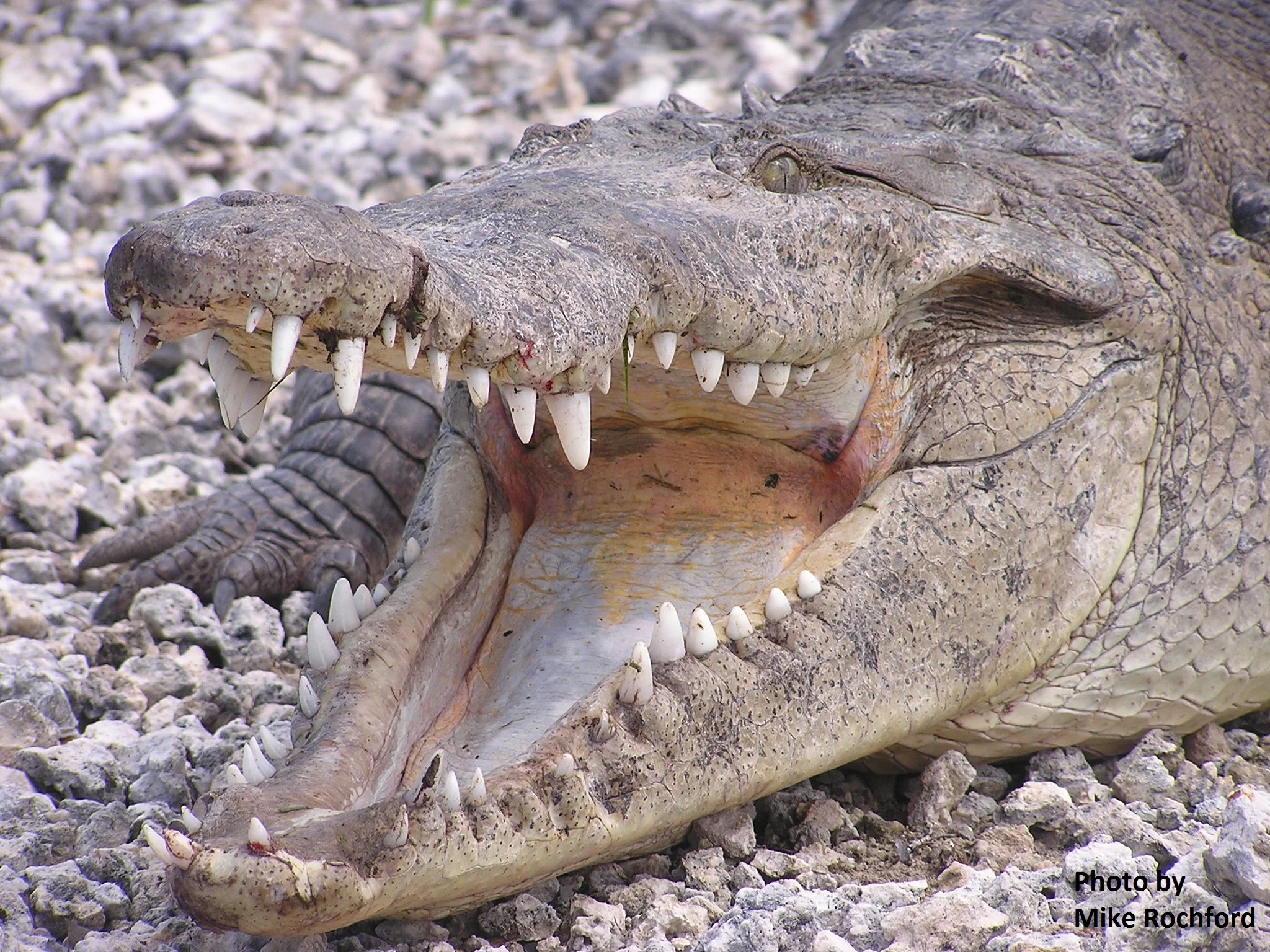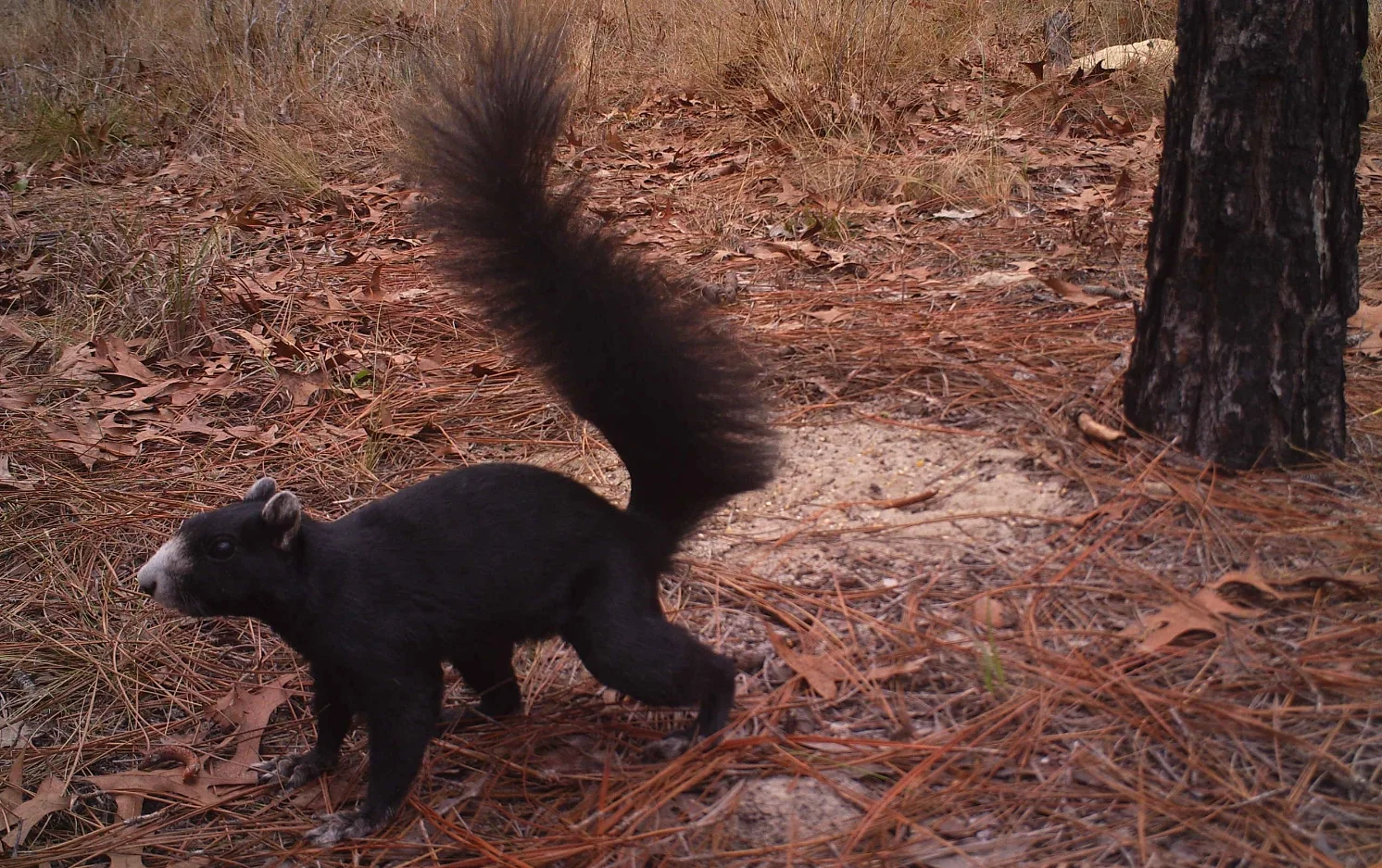The Southern Hognose snake is an extremely shy and allusive non-venomous reptile (The Eastern Hognose does produce a mild venom). Though rarely seen, they can be identified by their distinct pointed, and upturned snouts. They average around 35.6 cm in length and have been recorded as long as 61cm. The females are generally larger than the males of this species. Both males and females are generally gray, with black blotches on their backs and sides, however they can have tan or auburn tints as well. The Southern Hognose is often misidentified as its cousin, the Eastern Hognose snake. When threatened, the Southern Hognose can spread their necks out, similar to a cobra, and hiss loudly. They rarely strike or bite in self-defense, but they have been documented rolling over onto their backs and “playing dead”. Their diet consists of lizards, rodents, and other small vertebrates, but they primarily feed on frogs and toads, using their posterior fangs to capture prey, and to deflate any toad or frog.
Panama City Crayfish
The Panama City crayfish (Procambarus econfinae) (PCC) is a small freshwater crustacean growing to about two inches in length (body length minus claws). The dorsal side of this crayfish consist of a dark brown background color with a lighter brown dorsal stripe running the entire length of the animal. The sides of the crayfish are a light brown with dark brown spots. The size, claw shape, and leg arrangement identify the Panama City Crayfish from other crayfish sharing the same geographic range.
American Mink
The American mink (Neovison vison) is a semi-aquatic, carnivorous predator of the weasel family. They have long streamline bodies, small heads, and rounded ears with chocolate colored fur. Often, white markings occur on the chin or belly or both. Mink exhibit sexual dimorphism with the males being longer and heavier than females. Males vary in total length from 19-28 inches and weight from 1-3 pounds, while females measure 18-23 inches and weigh 1-2 pounds. Mink are frequently mistaken for river otters (Lontra canadensis), but they can be differentiated by their smaller size and pointed muzzle. River otter are twice as long and more than four times as heavy.
Green Turtle (Chelonia mydas)
If you have ever been fishing, diving or boating in the coastal waters off Florida’s coastline and noticed a sea turtle, odds are it was a Green Turtle (Chelonia mydas). Despite its name, green turtles are typically more of a olivey-brown than green, its name originating from the greenish hue found in the turtle’s fatty tissues. Green turtles are recognized to exist in four distinct life stages: Hatchling, Juvenile, Subadult and Adult. Ranging in size from hatchlings that weigh 1 ounce to adults that can weight up to 500 lbs, green turtles change in appearance as the grow.
Florida Pine Snake
The Florida Pine Snake (Pituophis melanoleucus) is a large, non-venomous colubrid snake found in the South East of the United States. It can be easily identified by its triangular rostral scale (on its face) that it uses for burrowing. Florida pine snakes can be rather polymorphic within their range but typically are tan or brown with dark brown saddles on their backs and red/brown spots near the tail. They can reach 7 feet long but reach adult size at 4-6 feet.
Southeastern pocket gopher
The Southeastern pocket gopher (Geomys pinetis) is a fossorial (burrowing) rodent native to the southeastern United States. The range of this species is restricted to dry, deep sandy soils of the coastal plains of Florida, Georgia, and Alabama. They are most abundant in pine-oak woodlands, open pine flatwoods, and grassy fields. Their maximum longevity may be upwards of 5 years in natural conditions.
Key Largo woodrat
The Key Largo woodrat (Neotoma floridana smalli) is a nocturnal 7-9-ounce rodent that is reddish above, cinnamon on the sides, and has a cream or white belly coloration. Its forefeet are white to the wrist and hindfeet are white to the ankles. It has large ears, protuberant eyes, and a hairy tail...
Bats!
Species Spotlight: Wild Turkey
In the early 1900s, wild turkey (Meleagris gallopavo) populations declined significantly throughout the United States, due to habitat destruction and unregulated subsistence hunting. As late as the Great Depression, fewer than 30,000 wild turkeys remained in the entire United States. Early restoration efforts focused on releasing pen-raised birds, but efforts were met with extreme disappointment due to poor survival rates among the pen-raised birds. This approach hampered the wild turkey's comeback for nearly two decades. It took the creation of the cannon net before wildlife agencies could successfully begin restoration of wild turkey populations by trapping and transferring large flocks of wild turkeys to areas of suitable habitat. Wild turkeys currently occupy 99 percent of suitable habitat in North America. Today more than 7 million birds can be found throughout North America thanks to the efforts of state, federal and provincial wildlife agencies, the NWTF and its members and partners.
Species Spotlight: Florida's Resident Grasshopper Sparrow
Grasshopper sparrows (Ammodramus savannarum) are small, short-tailed birds with a white median stripe at the top of a flattened head. Twelve subspecies of the grasshopper sparrow occur in grasslands throughout North America, Central America and the West Indies. Only one subspecies, the Florida grasshopper sparrow (A. s. floridanus) breeds in Florida. Another subspecies, the Eastern grasshopper sparrow (A. s. pratensis) can also be found across the state in the winter months. During the breeding season, Florida grasshopper sparrows are isolated from the eastern subspecies in Georgia by more than 300 miles. Please visit the Florida Birding Trail website for tips on where to see Florida grasshopper sparrows.
Species Spotlight: Fox Squirrel
The fox squirrel (Sciurus niger) is a large tree squirrel that occurs over much the U.S. east of the Rocky Mountains, with a historic range in the west from the prairie provinces of Coahila, Mexico to Manitoba, Canada, and throughout the eastern U.S. from western New York to Florida. There are currently 10 recognized subspecies, three of which have a conservation status: the Delmarva fox squirrel (S. n. cinereus) in Maryland is listed as endangered, and two subspecies in Florida, the Sherman’s fox squirrel (S. n. shermani) listed as a species of special concern in central Florida and the threatened Big Cypress fox squirrel (S. n. avicennia) in southwestern Florida. Two additional subspecies in northern Florida, the southeastern fox squirrel (S. n. niger) and Bachman’s fox squirrel (S. n. bachmani) have no conservation designation. Fox squirrels use a variety of habitat types throughout their range, but in Florida can most frequently be observed in the sandhills and mesic flatwoods.
Species Spotlight: American Crocodile
The American crocodile (Crocodylus acutus) is the most widely distributed of the New World crocodiles, ranging from the southern tip of Florida, along both the Atlantic and Pacific coasts of southern Mexico, Central America, and northern South America, as well as the Caribbean islands of Cuba, Jamaica, and Hispaniola. It is one of two species of crocodilian native to Florida, the other being the American alligator (Alligator mississippiensis). Crocodiles inhabit brackish or saltwater areas and can be found in ponds, coves, and creeks in mangrove swamps.
Species Spotlight: Coyote
Coyotes (Canis latrans) were sporadically introduced into Florida by hunters in the 1920s, but their natural range expansion from the western U.S. began in the 1970s. They have spread throughout the state from northwest Florida and will likely occur in every county within the next few years.
Coyotes are smart and resourceful. They are active during the day and night, and can flourish in most habitat types. They eat a wide variety of small invertebrate and vertebrate prey, but will also eat wild fruits and carrion. All of these characteristics make them very well suited for survival, even as Florida’s human population continues to grow.
Species Spotlight: Florida bonneted bat
The elusive Florida bonneted bat (Eumops floridanus) occurs nowhere in the world but south Florida, and is believed to have the most limited geographic distribution of any species of bat in the U.S. However, so little is known about these bats that even the size of the species range is uncertain!
The bonneted bat is Florida’s largest Chiropteran species, with a wingspan of up to 20 inches. (To put this in perspective, most of Florida’s bat species have a 10-12 inch wingspan.) The ears of these bats are broad and forward-facing, giving their heads the appearance of a bonnet.












